|
Week 2: August 8-14, 2014 |
Welcome
to the McGill Bird Observatory weekly report.
Click here for a complete listing of our archives.
Comments or
questions are welcome at "mbo AT migrationresearch.org".
|
PICTURE
OF THE WEEK: |
|
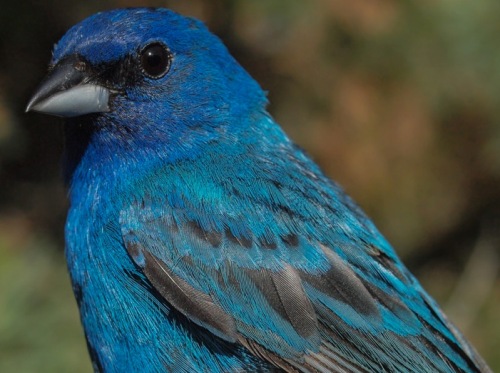
Soon Indigo Buntings will be molting - but for now we still have at least one
spectacularly blue male at MBO.
(Photo by Simon Duval)
-
|
|
|
THIS WEEK |
THIS FALL |
2014 TOTAL |
SITE TOTAL |
|
# birds (and species) banded |
191 (39) |
393 (48) |
1892 (77) |
48202 (113) |
|
# birds (and species) repeat |
48 (19) |
91 (28) |
430 (45) |
9564 (70) |
|
# birds (and species) return |
3 (2) |
16 (9) |
156 (28) |
1590 (38) |
|
# species observed |
81 |
91 |
145 |
209 |
|
# net hours |
472.0 |
1020.0 |
4433.4 |
83616.7 |
|
# birds banded / 100 net hours |
40.5 |
38.5 |
42.7 |
57.6 |
|
|
Note: table does not include nocturnal banding (owls) |
|
Banders-in-charge: Simon Duval and Gay Gruner
Assistants: Angelika Aleksieva, Marie-France Boudreault, Jo-Annie Gagnon, Marcel Gahbauer, Alison Hackney, Lisa Keelty, Helen Kohler, Lance Laviolette, Marcel Lebeau, Barbara MacDuff, Ana Morales, Benoît Piquette, Elise Titman, Rodger Titman, Christiane Tremblay, Jay VanderGaast
Notes:
Since 2009, the number of birds banded in week 2 has always dropped from the previous week. With a below average start to the 2014 fall season, we were hoping that trend might be broken, but it was not to be (although at least the difference was a modest one, just a dozen fewer birds this week. Again though the number of species observed (81) was above average for this point in the season.
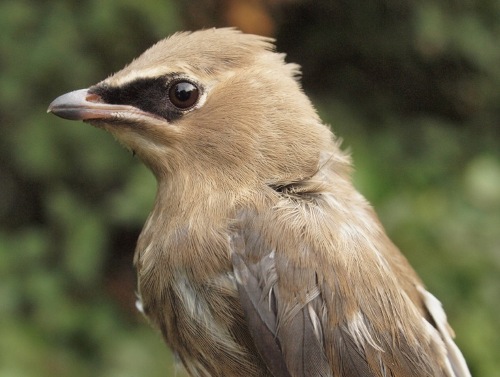
Some local birds were banded at MBO this week, including the juvenile Cedar Waxwing above, and adult Eastern Phoebe below.
(Photos by Simon Duval)
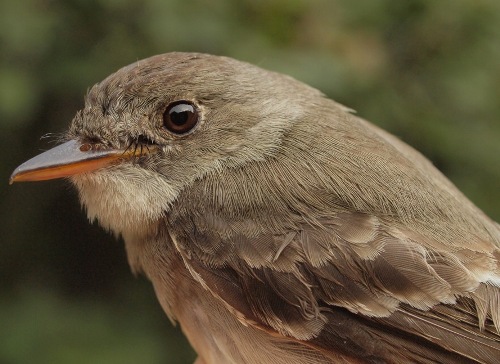
|
This week we observed only one new species for the year – Greater Yellowlegs. We kicked off the week banding two new species for 2014 on August 8 – Eastern Wood-Pewee and Philadelphia Vireo.
This week’s top 10 [last week's rank in brackets]
# individuals banded |
mean # individuals observed daily |
1. American Redstart (38) [1] |
1. American Robin (22) [1] |
2. Song Sparrow (20) [2] |
2. Cedar Waxwing (16) [7] |
3. Gray Catbird (15) [3] |
3. Common Grackle (16) [5] |
4. American Robin (8) [6] |
4. American Goldfinch (16) [3] |
5. Red-eyed Vireo (6) [4] |
5. Black-capped Chickadee (14) [2] |
5. Black-capped Chickadee (6) [5] |
6. Blue Jay (11) [6] |
5. Cedar Waxwing (6) [-] |
7. American Redstart (10) [10] |
5. Tennessee Warbler (6) [7] |
7. Song Sparrow (10) [4] |
5. Common Yellowthroat (6) [-] |
9. Red-eyed Vireo (8) [-] |
5. Rose-breasted Grosbeak (6) [7]
5. White-throated Sparrow (6) [-]
|
10. Red-winged Blackbird (7) [9] |
|
The top three species banded this week were the same as in week 1 – American Redstart, Song Sparrow, and Gray Catbird. While numbers dropped slightly for the latter two, the count of redstarts actually increased. This marks the fourth time in our ten-year fall program that American Redstart has been the top species in week two (also in 2008, 2011, and 2012), and the 38 individuals banded this week was just short of the record of 39 in 2012. The next three species in the list (American Robin, Red-eyed Vireo, and Black-capped Chickadee) are also the same as last week, just shuffled around a bit. In reality though, the vireo and chickadee were part of an unprecedented seven-way tie for fifth place that also involved Cedar Waxwing, Tennessee Warbler, Common Yellowthroat, Rose-breasted Grosbeak, and White-throated Sparrow – all of which are relatively regular at this time of year.
Among species observed, American Robins dominated for a second week in a row. This is a bit of surprise, as the species has consistently ranked between fifth and ninth place in previous years, and a maximum mean daily count of 18. It’s usually late in fall that American Robins are outnumbering other species … is this an early sign of what is to come in October? Among other species, there was a fair bit of shuffling of positions, but the only new addition to the top ten this week was Red-eyed Vireo.
|
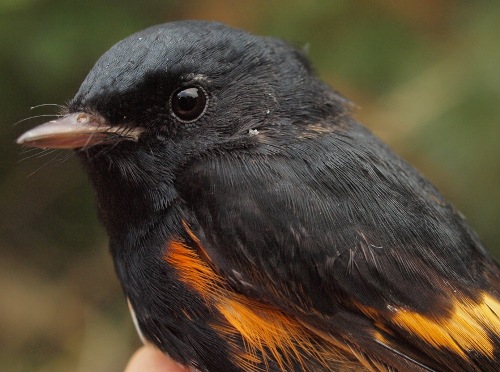
An after-hatch-year American Redstart, perhaps a local breeder, or maybe an early migrant through MBO.
(Photo by
Simon Duval)
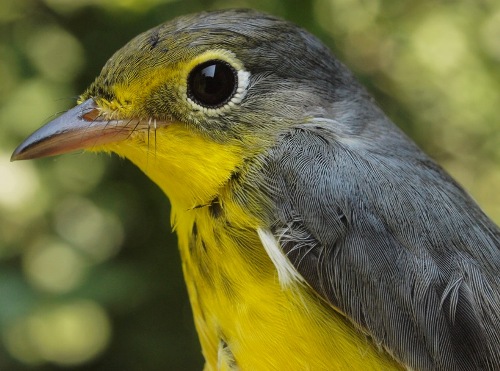
Canada Warbler, always one of our favourites at MBO.
(Photo by Simon Duval)
|





